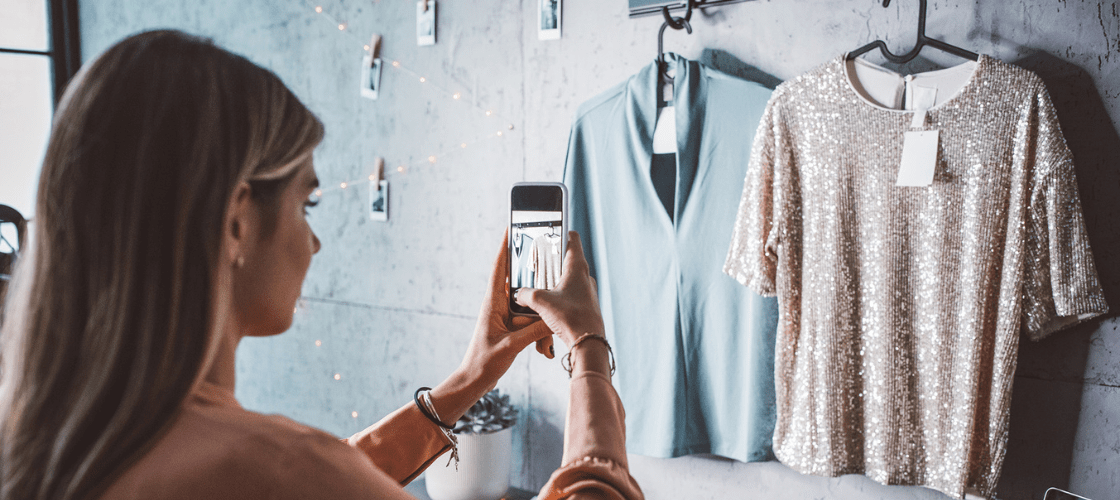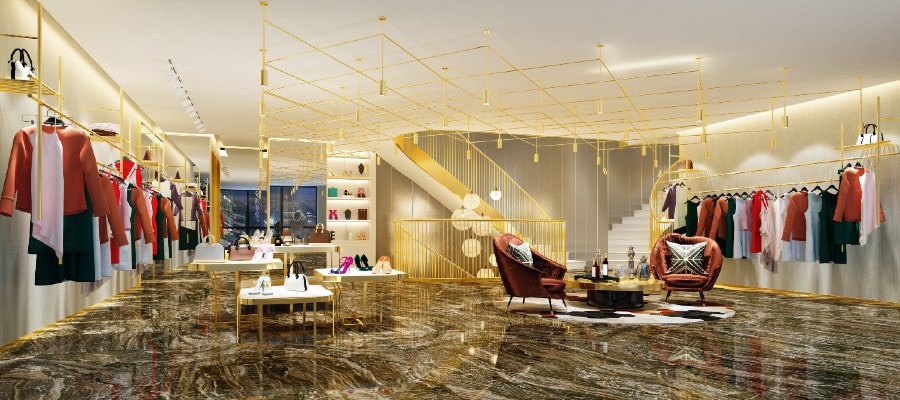Retail & Distribution
Metaverse, sustainability, data, and the role of sales associates: Retail’s new challenges
15 juli 2022

3D commerce: first steps towards the Metaverse
Moving forward in retail means being aware of new consumer behaviours and innovations. The “Metaverse”, a buzzword at the last CES in Las Vegas, is one of them.
It’s a concept that’s already been popularized by gamers and interactive products like The Simms, Fortnite, Animal Crossing and many others.
“We already spend a lot of time on platforms for playing games, meeting people and buying things, so let’s see where that takes us next,” says Vivier.
But you can already do quite a bit of shopping in the Metaverse today even when physical stores are closed: for instance, 3D modelling, photo shoots and virtual fittings.
“Avatars can engage us on screens seven days a week. Technologies are improving and tomorrow we’ll probably be able to move deeper into these metaverses using several different platforms,” explains Vivier.
Heading towards Sustainability
Whereas everyone moving into a virtual universe might seem a little way off, things like sustainability and CSR are today forces to be reckoned with – especially in the grip of a growing climate crisis.
“Consumers are asking for greater transparency and putting pressure on retailers and employees to help find solutions,” says Vivier.
Regulations like the Climate Law in France or the ‘European Green Deal’ are only the beginning of mounting laws, taxes and incentives to reduce our carbon footprint. Even financial markets are starting to invest less in companies viewed as damaging nature.
“Environmental and Social Governance (ESG) criteria and sustainable reporting will become more and more important,” he adds.
Retailers still have a long way to go. But sometimes it all starts with small steps. For instance, Vivier cites the example of Samsung which no longer uses four-colour printing on packaging for televisions and has introduced solar recharging cells on remote controls.
Some brands, like Patagonia, known for their environmental credentials, prove that sustainability can go hand in hand with growth. Even luxury brands like Kering have “reviewed and made improvements to their entire value chain – from sourcing, transport and energy consumption” – to show what can be done. And recognizing the diversity and morphologies in the choice of models at Victoria’s Secret, Nike and Lalaland is encouraging others to follow, says Vivier:
“CSR is also about inclusion, diversity and equal opportunities, with 17 objectives set out by the United Nations.”
Data essential for planning and operating
In an increasingly complex world of supply chain chaos, rising costs, inflation and global consumption, retailers have to turn to the powers of data to anticipate, plan and adapt.
Mastering data is vital for tracking products and avoiding counterfeits, especially in the luxury sector where blockchain and RFID technologies offer full traceability. Vivier sees another IT breakthrough in terms of warehouse automation and the arrival of micro-fulfilment centers using mini robots powered by AI.
“All of a sudden, we’ll become more efficient, faster and more profitable,” with some new entrants offering deliveries in under ten minutes. Add even more delivery options (curb-side pick-ups, straight into the trunk, garage deliveries, and so on…) “which will shift customer expectations” still further.
Drone deliveries are already becoming a reality at Walmart, as are autonomous trucks and shuttles in the United States (check out Amazon’s Zoox subsidiary).
And data also leads to greater personalisation and better shopping experiences: for instance, tailor-made clothes and lipsticks with makeup for every type of complexion.
“This data needs to be assimilated, tracked and processed. AI can deal with large volumes of data and the alliance of data and AI will bring new capabilities to retailers,” he says.
New roles for sales associates armed with the right tools
In the United States, four million people quit their jobs every month. In the face of what’s being dubbed the “great resignation”, companies are having to become more automated.
“It’s about automating certain lower, value-added tasks, such as inventories. This requires having the right tools and the right staff. Look at Amazon, which has a lot of robots and continues to recruit.”
Vivier believes that software and apps to help manage teams will become instrumental, especially for sending data from stores back to head-office and for sharing information between points of sale:
“The store is going digital and staff require solutions for smoother checkouts. Some brands like Nike and Starbucks are designing customer apps to deliver new and better experiences.”
Cegid already offers support for staff and shoppers with its Cegid Retail Y2 offer and Cegid Retail Live Store suite of collaborative applications. And with the recent acquisition of StorIQ (a Cegid Company) and its store operations planning platform, Cegid now manages everything across the point of sale.
Retailers need to be get ready for more autonomous, ‘Instagrammable’, experiential stores and be prepared for various new in-store services and payment methods (e.g. BuyNowPayLater). There are so many innovations opening up new horizons for retailers, and “brands like Apple have shown that the store is still important. We have to keep investing in them. A retailer’s job isn’t easy, but it’s going to be exciting,” concludes Vivier.


